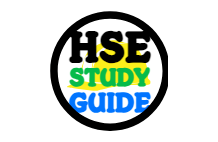
Work Permit Receiver Job Interview Questions and Answers
Introduction
The role of a Work Permit Receiver is crucial in ensuring workplace safety, especially in high-risk industries like oil & gas, construction, and manufacturing. They act as a bridge between workers and safety officers, ensuring that job permits are issued, followed, and completed safely. If you’re preparing for a Work Permit Receiver job interview, this guide will help you with common questions and effective answers.
General Interview Questions
Tell us about yourself.
This is your opportunity to introduce your background and experience.
Example Answer:
“I have over [X] years of experience in safety management, focusing on work permit systems. I have worked in [industry], ensuring that all safety protocols are met before work begins. I am detail-oriented and committed to maintaining a safe work environment.”
What do you know about the Work Permit Receiver role?
Example Answer:
“A Work Permit Receiver ensures that all job permits comply with safety requirements before work begins. They coordinate with supervisors and workers, review safety documents, and monitor compliance throughout the job.”
Job-Specific Questions
What is a work permit, and why is it important?
A work permit is an official document that authorizes specific high-risk work under controlled conditions. It ensures that all safety protocols are followed before, during, and after work execution.
Can you explain the different types of work permits?
- Hot Work Permit (welding, cutting, grinding)
- Confined Space Entry Permit (work in tanks, vessels, tunnels)
- Work at Heights Permit (scaffolding, elevated platforms)
- Cold Work Permit (routine maintenance, electrical work)
What are the key steps in obtaining a work permit?
- Identify job hazards.
- Conduct a risk assessment.
- Ensure PPE and safety controls are in place.
- Obtain approval from an authorized person.
- Conduct a pre-job safety briefing.
- Monitor work compliance.
Safety and Compliance Questions
How do you ensure compliance with safety regulations?
“I strictly follow safety procedures, conduct regular inspections, and ensure workers adhere to permit conditions. I also provide safety briefings before starting any job.”
How do you handle high-risk tasks like hot work or confined space entry?
“I verify that all safety precautions are in place, including fire watches for hot work and gas testing for confined space entry. I also ensure emergency rescue plans are ready.”
Situational and Behavioral Questions
What would you do if a worker refuses to follow permit conditions?
“I would stop the job immediately, explain the importance of compliance, and escalate the issue to a supervisor if needed.”
How do you handle an emergency situation on site?
“I would follow emergency response procedures, ensure workers move to a safe area, and immediately report to the safety officer or site management.”
Technical Knowledge Questions
What PPE is required for different types of work permits?
- Hot Work: Fire-resistant clothing, gloves, face shield
- Confined Space: Respirator, harness, gas detector
- Work at Heights: Safety harness, helmet, lanyard
How do you verify permit-to-work conditions before starting a task?
“I review the risk assessment, ensure control measures are in place, conduct a site walkthrough, and confirm worker training and PPE availability.”
Work Permit Receiver Job Interview Questions and Answers
A Work Permit Receiver plays a crucial role in ensuring safety and compliance on worksites, especially in high-risk industries such as Oil & Gas, construction, and petrochemicals. Below are commonly asked interview questions with suggested answers to help you prepare.
General Questions
1. Can you introduce yourself?
✔ Answer:
“I am [Your Name], a qualified and experienced Work Permit Receiver with [X] years in the industry. I have worked in Oil & Gas, construction, and refinery projects, ensuring all work is carried out safely and in compliance with company procedures. My expertise includes permit-to-work systems, hazard identification, and risk assessment.”
2. Why do you want to work as a Work Permit Receiver?
✔ Answer:
“I am passionate about workplace safety and ensuring that all jobs are executed according to the highest safety standards. The role of a Work Permit Receiver allows me to actively contribute to preventing accidents and ensuring compliance with company and regulatory safety procedures.”
3. What do you know about our company?
✔ Answer:
“Your company is a leader in the [industry], known for maintaining high safety standards and implementing strict permit-to-work procedures. I admire your commitment to safety, employee welfare, and operational excellence.”
Technical Questions
4. What is a Work Permit System?
✔ Answer:
“A Work Permit System is a formal document-based safety procedure that ensures hazardous tasks are performed safely by identifying risks and implementing control measures. It ensures communication between the workforce and management to prevent accidents.”
5. What are the types of work permits?
✔ Answer:
“The main types of work permits include:
- Hot Work Permit – For welding, cutting, and grinding activities.
- Cold Work Permit – For non-hot work activities such as maintenance and inspections.
- Confined Space Entry Permit – For working inside confined areas like tanks, vessels, or pipelines.
- Electrical Permit – For work on electrical systems.
- Excavation Permit – For digging or trenching activities.
- Work at Height Permit – For working above ground level using scaffolds or ladders.”
6. Who issues a work permit?
✔ Answer:
“A work permit is typically issued by the Permit Issuer or Authorized Person, such as a Safety Officer, Supervisor, or Site Manager, depending on the company’s permit-to-work system.”
7. What are the key components of a work permit?
✔ Answer:
“A work permit includes:
- Description of work
- Location of work
- Type of permit
- Risk assessment and control measures
- Required PPE
- Validity period
- Approval signatures
- Emergency procedures”
8. What is the difference between a Hot Work Permit and a Cold Work Permit?
✔ Answer:
“A Hot Work Permit is required for activities involving flames, sparks, or high temperatures, like welding and cutting. A Cold Work Permit covers non-heat-producing activities such as painting, assembly, or inspections.”
9. How do you ensure a work permit is valid?
✔ Answer:
“I check the permit for proper authorization, expiration time, necessary safety precautions, and adherence to job-specific safety requirements. I also ensure workers understand the risks and control measures.”
Safety & Risk Management Questions
10. What safety precautions should be taken before issuing a work permit?
✔ Answer:
“Precautions include conducting a risk assessment, ensuring proper PPE usage, confirming emergency response readiness, checking for isolation of hazardous energy sources, and briefing workers on safety requirements.”
11. How do you handle an emergency during permitted work?
✔ Answer:
“I follow emergency response procedures, stop all work immediately, ensure workers are safe, report to the responsible authority, and assist in implementing corrective actions.”
12. What is a Job Hazard Analysis (JHA) and why is it important?
✔ Answer:
“A JHA is a safety procedure used to identify hazards associated with a task and implement controls. It helps prevent accidents and ensures compliance with safety regulations.”
13. What is LOTO (Lockout/Tagout)?
✔ Answer:
“LOTO is a safety procedure used to isolate energy sources (electrical, mechanical, hydraulic) before maintenance or repair work to prevent accidental startup.”
14. What are the most common hazards you have encountered in your job?
✔ Answer:
“Common hazards include fire risks in hot work, falls from height, exposure to toxic gases in confined spaces, and electrical shock hazards.”
15. How do you ensure contractors and workers follow safety procedures?
✔ Answer:
“I conduct toolbox talks, enforce PPE requirements, ensure proper training, and regularly inspect work areas for compliance.”
Work Experience & Situational Questions
16. Can you describe a time when you prevented an accident?
✔ Answer:
“In my previous role, I noticed a worker about to perform hot work near a flammable storage area. I immediately stopped the work, conducted a risk assessment, and ensured the area was safe before proceeding.”
17. Have you ever faced a conflict over permit compliance? How did you handle it?
✔ Answer:
“Yes, a worker once refused to follow PPE requirements. I calmly explained the risks, referred to company policies, and escalated the issue to the safety team, ensuring compliance.”
18. How do you handle pressure when multiple permits need approval?
✔ Answer:
“I prioritize high-risk tasks, communicate effectively with the team, and ensure all permits are reviewed thoroughly without compromising safety.”
Regulatory & Compliance Questions
19. What safety regulations are you familiar with?
✔ Answer:
“I am familiar with OSHA, NFPA, and Saudi Aramco Safety Standards, as well as company-specific safety policies.”
20. How do you ensure compliance with safety regulations?
✔ Answer:
“I stay updated on regulations, conduct regular safety audits, and ensure all work follows legal and company safety requirements.”
21. What do you do if you find a permit violation?
✔ Answer:
“I stop the work immediately, inform the responsible person, document the violation, and recommend corrective actions.”
Soft Skills & Communication Questions
22. How do you communicate safety procedures to workers?
✔ Answer:
“I use toolbox talks, safety meetings, and visual demonstrations to ensure clear understanding.”
23. How do you handle a non-compliant worker?
✔ Answer:
“I remind them of the safety rules, provide additional training if needed, and escalate the issue if necessary.”
24. Describe a time when you had to make a quick decision regarding safety.
✔ Answer:
“A fire hazard was detected near a welding area. I immediately stopped the job, removed flammable materials, and ensured fire extinguishers were in place before resuming work.”
Miscellaneous Questions
25. What motivates you in this role?
✔ Answer:
“Knowing that I contribute to a safe work environment and prevent accidents motivates me.”
26. What challenges do you foresee in this role?
✔ Answer:
“Enforcing safety rules in a high-risk environment can be challenging, but with proper training and communication, it can be managed.”
27. How do you keep yourself updated with safety trends?
✔ Answer:
“I attend safety training, read industry publications, and follow regulatory updates.”
28. What is your greatest strength as a Work Permit Receiver?
✔ Answer:
“My ability to identify hazards quickly and enforce safety protocols effectively.”
29. Where do you see yourself in five years?
✔ Answer:
“I aim to grow into a Safety Supervisor or Safety Officer role, contributing to overall workplace safety management.”
30. Why should we hire you?
✔ Answer:
“My expertise in work permit systems, risk assessment, and strong communication skills make me a perfect fit for ensuring safety on your worksite.”
Best Tips to Ace the Work Permit Receiver Interview
- Research the company’s safety policies.
- Demonstrate strong communication skills.
- Be prepared to discuss real-life experiences.
- Show knowledge of industry-specific safety procedures.
Conclusion
A Work Permit Receiver plays a vital role in ensuring workplace safety. By preparing for these interview questions, you can confidently demonstrate your knowledge and skills. Stay focused on safety, compliance, and teamwork to increase your chances of securing the role.
Top 25 Excavation Safety HSE Interview Questions and Answers
Top 25 Work at Height Safety HSE Interview Questions and Answers
Top 25 Scaffold Safety HSE Interview Questions and Answers
Top 25 Confined Space Safety HSE Interview Questions and Answers
Top 25 Electrical Safety HSE Interview Questions and Answers
FAQs
1. What qualifications are required to become a Work Permit Receiver?
Most employers require safety certifications such as NEBOSH or OSHA, along with experience in workplace safety.
2. How can I improve my chances of getting hired?
Gain experience in safety roles, complete safety training courses, and stay updated on industry regulations.
3. What industries require a Work Permit Receiver?
Oil & gas, construction, chemical plants, manufacturing, and refineries.
4. How important is safety knowledge for this role?
Extremely important. A Work Permit Receiver ensures compliance with all safety procedures to prevent accidents.
5. Can I apply for this job without prior experience?
Some companies offer trainee positions, but prior experience in safety-related roles is often preferred.
























